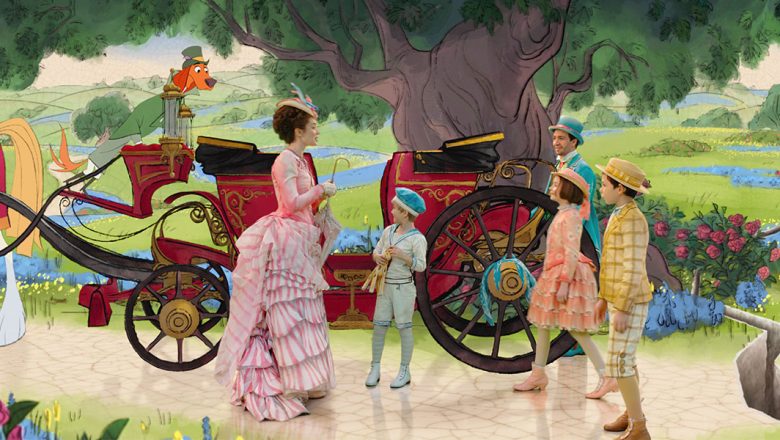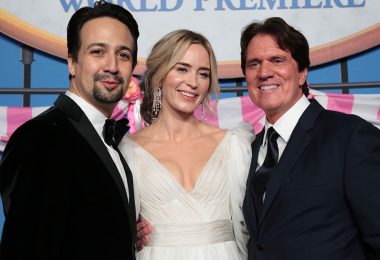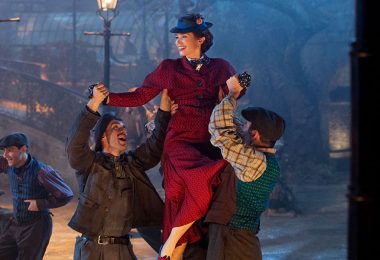By Beth Deitchman
Whether you’re such a devotee of the 1964 film Mary Poppins that you can recite “Supercalifragilisticexpialidocious” backwards along with the beloved nanny herself—it’s “dociousaliexpilisticfragicalirupes,” for your information—or you just have an overwhelming feeling of nostalgia for the film, chances are you consider the film’s animated sequences to be among its most memorable. Disney’s Mary Poppins Returns, opening in theaters today, continues this wonderful tradition, as Mary Poppins, Jack the lamplighter, and the young Banks children are transported to a colorful and captivating animated world that exists within an exquisite (though cracked) Royal Doulton china bowl.
To shepherd this spectacular sequence from sketch to screen, director Rob Marshall enlisted animation veteran Jim Capobianco, whose more than 25-year Disney history includes stints in the story department on The Lion King and The Hunchback of Notre Dame, as well as work on Pixar films Ratatouille—for which he wrote the original story, and served as director and writer for Your Friend the Rat, which appeared on the film’s home entertainment release—and WALL•E, for which he animated the film’s end credit sequence. An expert in traditional “2-D” animation, Capobianco was a natural choice to serve as Animation Sequence Supervisor on Mary Poppins Returns.
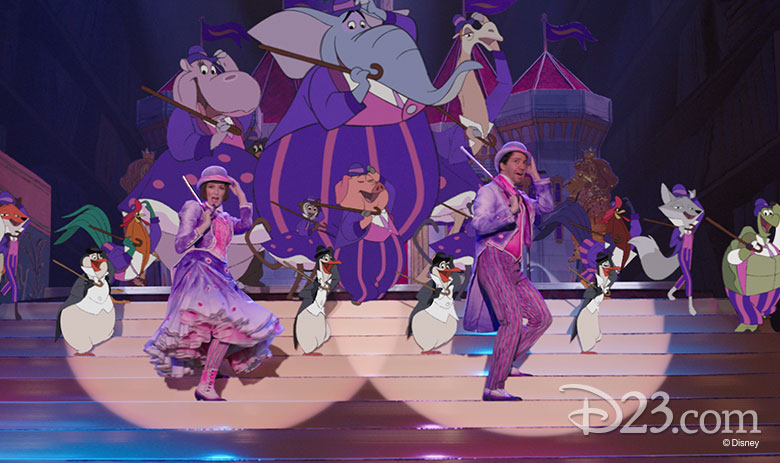
Capobianco assembled a multigenerational team of more than 70 animators, many who came out of retirement for the chance to work on a new film featuring the beloved Mary Poppins. The team researched English music halls to discover how different stage curtains open and Royal Doulton china to learn how “crazing” or cracks develop in glazed surfaces. They also, of course, spent some time studying penguins.
A quartet of penguin performers in Mary Poppins Returns serve as a nostalgic nod to the 1964 film and its waddling waiters. According to Capobianco, the filmmakers wanted the new movie to stand on its own, but during an early meeting to discuss the animation, “We went around the table and I think, to a person, everyone said the penguins should be included.” Penguin behavior informed the animation of the birds, but what was even more valuable, Capobianco says, was all of the rehearsal footage that Marshall shot of the dancers who served as penguin stand-ins during the live-action filming: “We would use that as our research for the penguins. We’d just have to translate it to little stubby legs and those little bodies.”
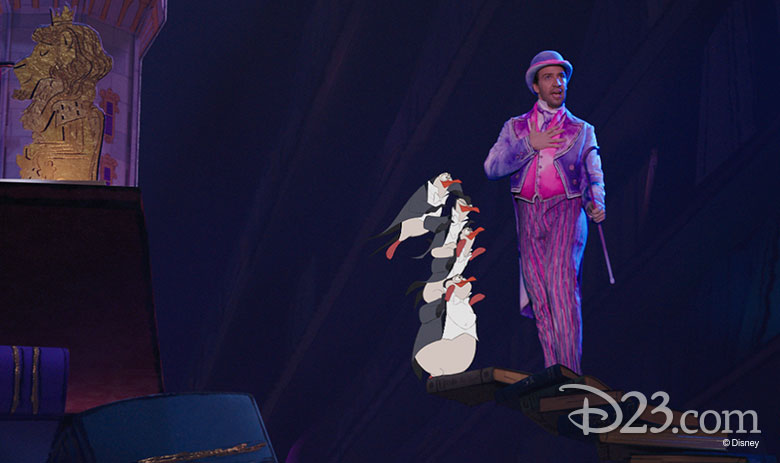
Beyond the fact that they live within a Royal Doulton bowl rather than within a chalk illustration, the penguins in Mary Poppins Returns are very different from the penguins of 1964. Capobianco explains, “Topsy says in the movie, ‘I’m Mary’s second cousin removed several times.’ That’s kind of the same with these penguins. I think they’re related but they’re definitely their own group.” The animators named them after classic movie stars, so keep an eye out for Fred, named in honor of iconic dancer Fred Astaire; the tall, slender Cary, after leading man Cary Grant; the diminutive Charlie, who was originally Chaplinesque but who would come to be called “Hammy” for his tendency to draw the spotlight; and the bigger-boned bird, Ollie, who reminded the animators of Oliver Hardy.
The nostalgia for the original film carried off screen, as well as on screen, as Capobianco found himself pitching animation sequences to the filmmakers inside the Hyperion Bungalow on the Disney Studio lot, a storied building that had been moved to the Burbank lot from its original location. Capobianco would pin his drawings to the walls, and “I would go through the sequence just like I used to do way back at Disney when I worked on The Lion King and in my early days at Pixar.” As he would pitch his ideas, Marshall might suggest changes to the music, which would inspire composer, songwriter and co-lyricist Marc Shaiman to sit down at the piano and rewrite the melody. “I would pull out the paper and re-draw some things and we would work back and forth that way,” Capobianco recalls, noting that the experience felt like one that could easily have taken place on the lot 54 years ago with Walt, the Sherman brothers, and Don DaGradi—and made for a practically perfect way to create enduring movie magic.


